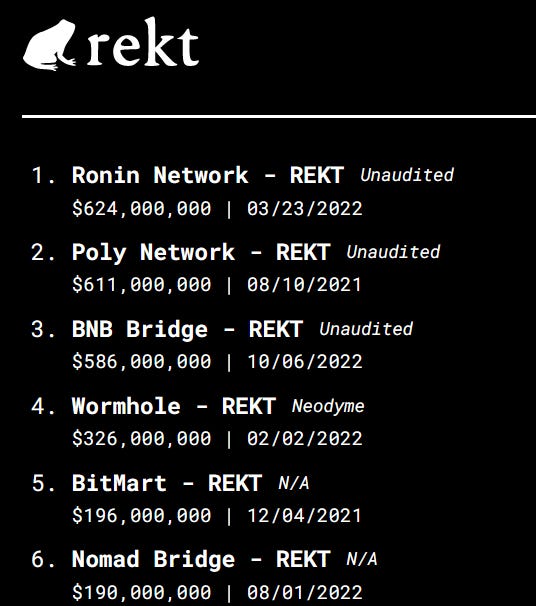Building Back Better with OP Stack

.png-a616dc52961c1edd72b0c1fdf5f47e7a.png-d44bdfd9b52d9f76131f38376a1fe385.png) Kraken - See What Crypto Can Be with Kraken
Kraken - See What Crypto Can Be with Kraken
Dear Bankless nation,
The bear market hit us hard.
Then came Terra. Then 3AC and a whole slew of crypto banks. Now it’s FTX.
But the onslaught of bad news hasn’t changed the bear market narrative one bit.
If we want out of this bear, the only way is to build back faster and more nimbly.
That’s what Optimism is doing with the “OP Stack”.
It’s a set of foundational lego bricks that lets devs build rollup modules on the fly.
If you think Ethereum is already going modular, OP Stack is about to take it to the next level.
Today’s newsletter by Donovan breaks down this exciting development by the Optimism team. Strap in.
- Bankless team
Once upon a time in 2021, there was a crypto bull market. Ethereum became congested and users paid hundreds of dollars for gas fees.
The solution? Deploy new faster chains! “Ethereum killers” like Solana, Binance Smart Chain and Avalanche came along. They all ran liquidity mining campaigns, and they all sapped capital from Ethereum.
People abandoned Ethereum despite supporting it in the past. 😢
Alt-L1 chains temporarily solved the market demand for scalability. But the emergence of so many chains with different chain standards introduced the need for cross-chain bridging. That was a necessary hassle. But more than mere inconvenience, it’s dangerous. Bridge hacks are commonplace. We don’t like that.

Ethereum tried to answer the scalability problem differently through rollups. Offload the transactions to be processed on a separate (rollup) chain, but inherit mainnet’s decentralization and robust security.
That’s been working. As of October, Layer-2s have flipped Ethereum mainnet on transactions execution.

But there’s still a problem. Every new chain or rollup is a monolithic chain in itself with its own independent languages and design structures. The result? An asynchronous Web3 ecosystem. This is why we need something like Hop protocol to “hop” between rollup chains.
If Web3 is after mainstream adoption, we need to say bye to this constant network switching. People don’t want to deal with fragmented, asynchronous chains. That’s like having to exchange currencies every time you want to make an interbank transfer.

If cross-chain bridges were one-off band-aid fixes, then modular rollups are beginning to pave the way for a more comprehensive solution.
Wat do? The devs behind Optimism have an answer that gets to the root of problem: it’s the OP Stack.
The roadblock today 🚧
Today, most chains are pursuing their own modular strategies. Optimism, Arbitrum and Starknet differ on the execution layer, but they share the same settlement, consensus and data availability layers by outsourcing them to the Ethereum mainnet.
Metis and Celestia are chains that opt for their own data availability layers, while still using Ethereum as their settlement and consensus layers. StarkEx-based validium chains such as Immutable X or rhino.fi perform something similar, by running their own relatively centralized data availability committees — groups of preselected nodes to host transaction data.

Every chain runs their own siloed, monolithic strategies, with differences in designs on the execution, settlement and data availability layers. What if these chains share a standardized open source library of code, rather than the siloed chain/rollup system of today?
Enter OP Stack 🧱
That’s where Optimism’s OP Stack comes in: a set of modular, foundational lego bricks for building more expressive and precise rollup chains on Ethereum that aren’t possible on monolithic L2s today.
OP Stack is a set of standardized, open source modules that can be assembled to build a custom chain – what Optimism calls “OP-chains” – to serve any specific blockchain use-case.
Let’s break it down:
Modules are bits of data any developer can plug into the OP Stack to create an L2, L3 or L4.
“Standardized” means there is consensus on what a module’s standards should be and that it’s implementable by all.
Open source means it is freely available for anyone to iterate and request on
With OP Stack, you won’t be tied into one particular proof system or technology. Devs have the ability to pop modules in and out of the different execution, consensus, settlement and data availability layers of a chain, just like switching APIs.
It’s the ultra modular solution to the monolithic status quo. dYdX chose to leave Ethereum for a Cosmos appchain, because they desired greater modularity over the consensus layer of their chain. OP Stack solves this.
OP Stack is designed to allow forking of code in a much easier way than current efforts, because developers can easily abstract away the individual components of a blockchain and modify it by plugging in different modules.
Maybe an Optimistic rollup wants to revamp itself into a ZK-rollup. No problem! Just switch out its fraud proof module for a validity proof module on the settlement layer.
Maybe a chain wants to use Celestia for its data availability layer? No problem! Swap out Ethereum for Celestia as a data availability layer.
Want to swap out the EVM for an alternate virtual machine like FuelVM on the execution layer? Swapping out the execution layer on a running chain is hard, but that’s a technical possibility with OP Stack.
Maybe you want to run Minecraft as a L2 rollup, but on-chain gaming is too computationally-intensive on mainnet? Actually, someone’s already done it. It’s called OPCraft, and the team behind it, Lattice, created it by introducing its own execution module into the execution slot of a L2 rollup, then modified a plasma into the consensus layer for added scalability.
So OPCraft exists as its very own L2 rollup (an OP-chain!) on Ethereum where every action in-game is performed as an on-chain transaction that rolls up back down to the Ethereum mainnet. It’s Minecraft on an EVM-compatible blockchain that scales! And just like any other rollup, devs can access it through a node and deploy smart contracts on it (for more on this, see this Metaversal article.)
☀️☁️☀️
— Lattice (@latticexyz) October 18, 2022
1/ Announcing #OPCraft 🔴👑
Over the last few months, we have been working on an exciting technical collaboration with @OptimismFND
Using our MUD on-chain game engine & @OptimismFND’s OP Stack, we built a 3D Autonomous Worldhttps://t.co/JvvjmZ8ljo
🌊🐚🌊 pic.twitter.com/FZXbPyYQDw
Lattice did it by leveraging the Optimism Bedrock rollup architecture. Bedrock is the first implementation of the OP Stack, a collection of modules that Optimism uses. Bedrock uses the Ethereum Virtual Machine as the execution layer to make it EVM-equivalent, with Cannon – its interactive fault proof system on the settlement layer.
Bedrock is the next generation of rollup architecture. It's been deliberately designed to re-use as much of Ethereum's code, infrastructure, and design patterns as possible. EVM Equivalence is sooo 2021. It's time for Ethereum Equivalence.
— Optimism (✨🔴_🔴✨) (@optimismFND) May 19, 2022
And more crazy forks are coming. 0xPARC built a Game Boy rollup by swapping out Bedrock’s execution engine with a Game Boy emulator.
And it’s all on-chain. 🤯
The open garden of OP Stack 🌱
The main problem today with modular blockchains is increased fragmentation as devs make their own design choices and tradeoffs. This fragmentation problem is similar to Web2 walled gardens, except that here it’s incidental.
OP Stack solves this gradual fragmentation by approaching building in Web3 from an open garden philosophy. All OP-chains can enjoy atomic cross-chain composability as long as OP-chains voluntarily opt into the same shared sequencer set, the sole entity that produces blocks on every OP-chain.
OP-chains may not want to run their own sequencers so they can pay a fee to use Optimism’s shared sequencer that they trust. This opens up an alternative mode of monetization for Optimism beyond just dapps on the Optimism chain currently.
Eventually, any user on Ethereum can send a transaction from any end of the ecosystem to one another. No more network switching or bridging!
That vision gives birth to Optimism’s emergent structure of a “Superchain”, where hundreds/thousands of OP-chains will be fully interoperable on Optimism and connected by the same technical fabric.
Launching rollups will be no harder than spinning up an ERC20 token, speeding up the rate of Web3 experimentation and innovation.
It’s also more than interoperability.
With the increased flexibility in configurations that OP Stack shared modules enable, devs are repeatedly recycling reusable code that previous devs have used, thereby making the code stronger and more resistant against hacks and bugs.
For instance, when the Lattice team built OPCraft, they designed it with a much higher gas limit per block than Optimism’s own chain. In that different configuration, they found certain bugs that were previously not apparent.
Let a thousand flowers bloom 🌼
In sum, OP Stack is an ode to Ethereum’s fundamental vision of scaling through modularity.
Optimism is building an entirely open-source ecosystem of rollup chains, and the OP Stack is the foundation on which that vision is built. But more than rollups, OP Stack can also be harnessed to build governance and identity modules that give developers the ability to easily design their chains from scratch.
OP-chains are not Cosmos appchains. Neither are they mono-chain. It’s a Superchain merged by the same technical standards.
When all is said and done, the rollup ecosystem will bloom like a thousand flowers on top of Ethereum.
Disclaimer: OP Stack is still in its early stages of development. The Optimism team is hard at work on the documentation and cleaning up of APIs towards that end. While the codebase is available for motivated teams like Lattice to easily fork, it will be some time before it is readily usable off the shelf. Special thanks to the Optimism team for useful comments on this article.
 Donovan Choy
Donovan Choy 
.png-a616dc52961c1edd72b0c1fdf5f47e7a.png-8359976fdb0656215e306b0de9208da8.png)